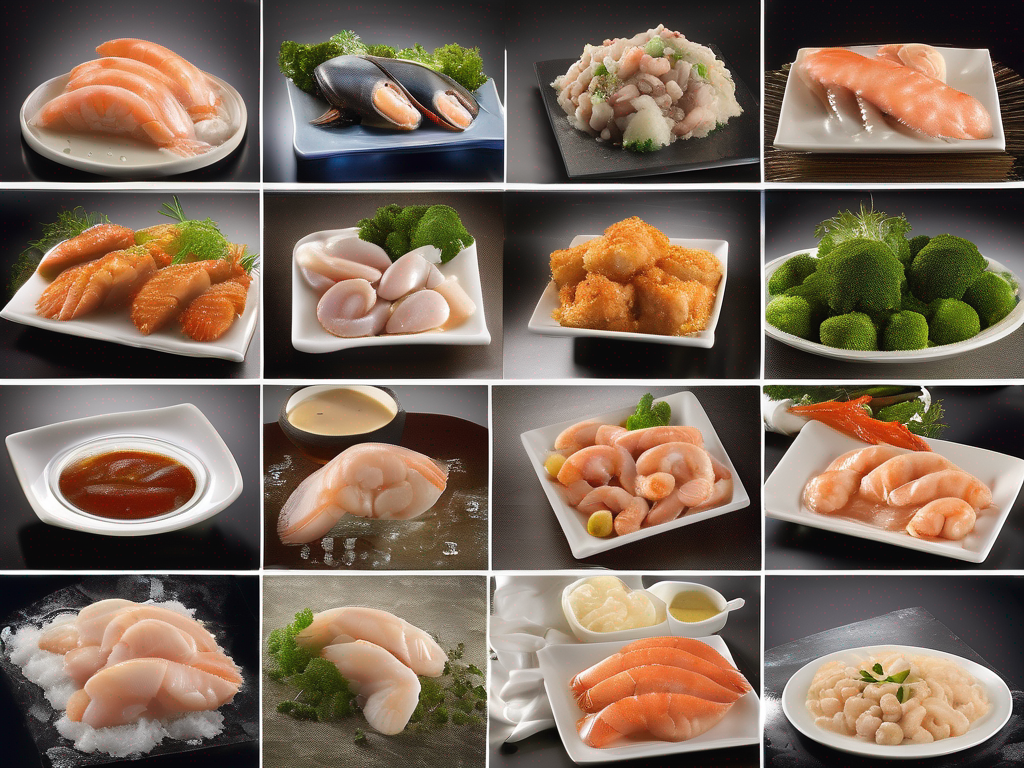
Thawing Frozen Seafood Dinners: Proper Techniques for Safe Cooking
Get Your Free Food Safety Cheat Sheet
30 most common foods with instant answers. Print it and stick it on your fridge—completely free!
Thawing Frozen Seafood Dinners: Proper Techniques for Safe Cooking
When it comes to preparing frozen seafood dinners entrees purchased commercially frozen, proper thawing is essential to ensure food safety and quality. Thawing seafood correctly can help prevent bacterial growth and maintain the flavor and texture of the dish. In this guide, we will explore the best practices for thawing frozen seafood dinners entrees, along with important safety tips to keep in mind. (Frozen seafood dinners entrees purchased commercially frozen)
Why Proper Thawing is Important
Thawing seafood properly is crucial for several reasons:
- Safety: Thawing seafood at the correct temperature can help prevent the growth of harmful bacteria that can cause foodborne illnesses.
- Quality: Proper thawing methods can help preserve the flavor, texture, and appearance of the seafood, ensuring a delicious meal.
- Even Cooking: Thawing seafood evenly can help ensure that it cooks evenly, reducing the risk of undercooked or overcooked portions.
Thawing Methods for Frozen Seafood Dinners
There are several safe methods for thawing frozen seafood dinners entrees. Here are some of the most common techniques:
1. Refrigerator Thawing
Refrigerator thawing is the safest method for thawing frozen seafood dinners entrees. Here's how to do it:
- Place the frozen seafood dinners entrees in a shallow dish or on a plate to catch any drips.
- Place the dish in the refrigerator and allow the seafood to thaw gradually. Plan ahead, as this method can take several hours to overnight, depending on the size and thickness of the seafood.
- Once thawed, cook the seafood immediately.
2. Cold Water Thawing
Cold water thawing is a quicker method for thawing frozen seafood dinners entrees. Here's how to do it:
- Place the frozen seafood in a leak-proof plastic bag.
- Submerge the bag in a bowl of cold water. Change the water every 30 minutes to ensure it stays cold.
- Thawing time will vary depending on the size and thickness of the seafood. It typically takes 1-2 hours.
- Once thawed, cook the seafood immediately.
3. Microwave Thawing
Microwave thawing is the fastest method for thawing frozen seafood dinners entrees, but it should be used with caution to avoid uneven cooking. Here's how to do it:
- Place the frozen seafood in a microwave-safe dish.
- Use the defrost setting on your microwave, or set it to 50% power.
- Check the seafood frequently to ensure it thaws evenly, rotating or rearranging it as needed.
- Cook the seafood immediately after thawing.
Safety Tips for Thawing Seafood
When thawing frozen seafood dinners entrees, it's important to keep these safety tips in mind:
- Avoid Thawing at Room Temperature: Never thaw seafood at room temperature, as this can promote the growth of harmful bacteria.
- Use a Food Thermometer: To ensure that seafood has reached a safe internal temperature, use a food thermometer to check the doneness.
- Cook Immediately After Thawing: Once seafood is thawed, it should be cooked immediately to reduce the risk of bacterial growth.
Conclusion
Properly thawing frozen seafood dinners entrees purchased commercially frozen is essential for both food safety and quality. By following the recommended thawing methods and safety tips outlined in this guide, you can enjoy delicious and safe seafood dishes at home. Remember to plan ahead, choose the right thawing method for your needs, and always cook seafood to the recommended internal temperature for safe consumption. Enjoy your meal!
For more information on [frozen seafood dinners entrees purchased commercially frozen](/food/frozen seafood dinners entrees purchased commercially frozen), check out our selection of recipes and tips for cooking seafood safely and deliciously. (Frozen seafood dinners entrees purchased commercially frozen)
Authoritative Food Safety References
These agencies and university labs inform every tip and health precaution we publish.
USDA FoodKeeper – Cold Storage Guidelines
Official refrigerator, freezer, and pantry timelines maintained by the U.S. Department of Agriculture.
Visit USDA FoodKeeperFDA Produce Safety Rule & Grower Guidance
Field-to-fridge handling practices that prevent contamination of fruits, vegetables, and leafy greens.
Visit FDA Produce SafetyCDC Foodborne Illness Prevention Hub
Surveillance-backed guidance on pathogens, symptoms, and steps to reduce foodborne illness risk.
Visit CDC Food SafetyUC Davis Postharvest Technology Center
University research detailing optimal storage atmospheres for produce after harvest.
Visit UC Davis PostharvestPenn State Extension – Home Food Preservation & Safety
Peer-reviewed extension bulletins on safe canning, chilling, and reheating practices.
Visit Penn State ExtensionGet Your Free Food Safety Cheat Sheet
30 most common foods with instant answers. Print it and stick it on your fridge—completely free! Want more? Upgrade to the complete guide with 70+ foods.
Scan your food directly and get instant safety info using our AI-powered camera feature.